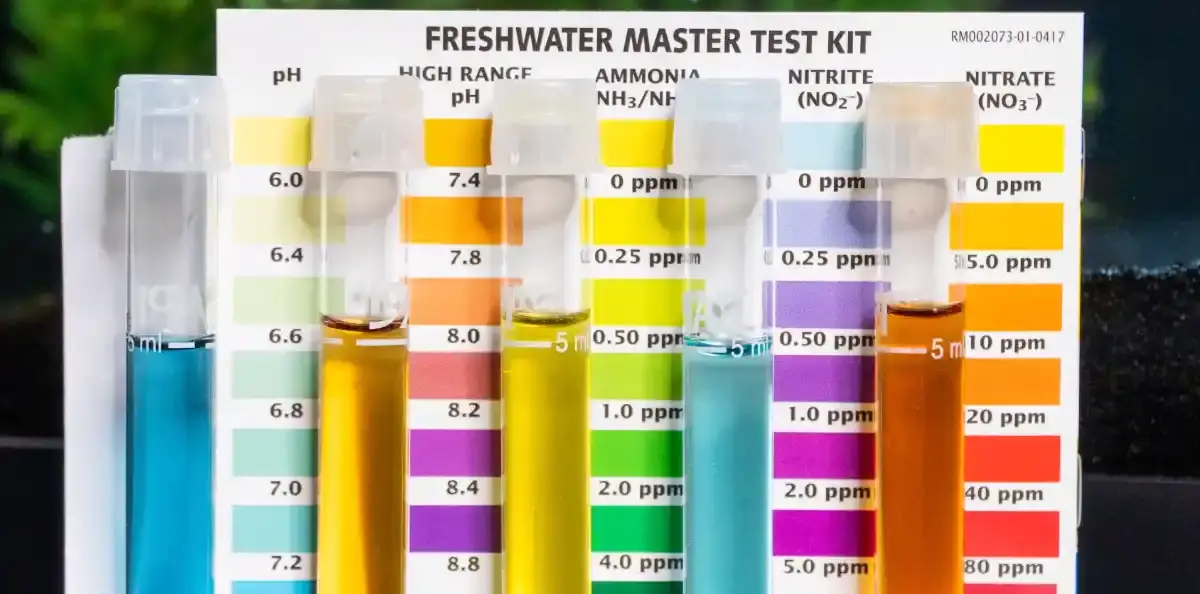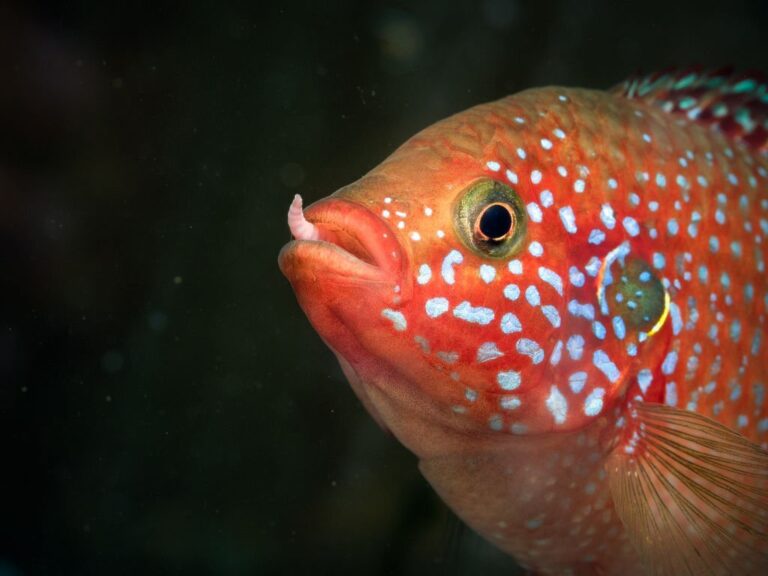Aquarium pH, GH, and KH: An Easy Water Chemistry Guide
The terms pH, GH, and KH are commonly used in water chemistry, but they cause a lot of confusion in the freshwater aquarium community. Knowing the chemical properties of your water will help your fish stay healthy.
This beginner’s guide will explain what these parameters mean, how to measure them, and how to decrease and increase them.
Aquarium pH (Power of Hydrogen)
pH measures the number of hydrogen ions in the water. It essentially indicates whether the water is acidic or alkaline. pH is measured on a scale ranging from 0 to 14. It is acidic if the pH is less than 7. If the pH is greater than 7, the solution is alkaline. And if the pH is exactly 7, then it’s neutral.
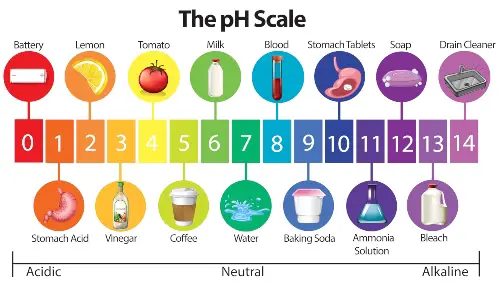
Ideal Aquarium pH
In general, most freshwater fish are content with a pH level between 6.5 and 8.0. This range, however, does not suit all fish. African Cichlids prefer a higher pH, whereas Caridina Crystal Shrimp prefer a lower pH. Before adding any new fish to your aquarium, it’s critical to research their preferred pH level.
How to Measure Aquarium pH
The API Master Test Kit includes ammonia, nitrite, nitrate, and pH tests (low and high). Although the pH in an aquarium changes naturally throughout the day, the key is to keep it relatively stable with no sudden spikes. In general, the pH level isn’t a critical number to hit if you’re just keeping fish for fun, but it becomes more important if you’re trying to breed specific fish and raise their fry, or if you’re troubleshooting health issues with your fish.
Aquarium GH (General Hardness)
GH measures the number of calcium and magnesium ions in the water. It basically indicates how hard or soft the water is. It’s one of the simplest ways to see if the water contains enough salts and minerals for healthy biological functions (muscle and bone development of fish, snail shell development, shrimp molting, and plant growth).
Ideal Aquarium GH
GH is measured in dGH (degrees of GH) and ppm (parts per million). Most freshwater aquariums have GH levels ranging from 4 to 8 dGH (70 – 140 ppm). Although all animals require some minerals, some fish, such as livebearers, goldfish, and African cichlids, prefer higher GH levels. If you’re trying to breed Discus or other softwater fish, you may need to lower the GH to 3 dGH (or 50 ppm) or lower. Again, research is essential.
How to Measure Aquarium GH
The API GH and KH Test Kit include tests for both GH and KH levels. It’s important to keep in mind that GH measures both magnesium and calcium levels. If your GH is high but your plants and fish aren’t doing well, the aquarium water may have enough magnesium but not enough calcium. In this case, you can use a Calcium test kit (designed specifically for freshwater) to see if you’re deficient in a specific mineral. The bottom line is that if your GH levels fall too low, your fish and plants may suffer from poor growth or even die.
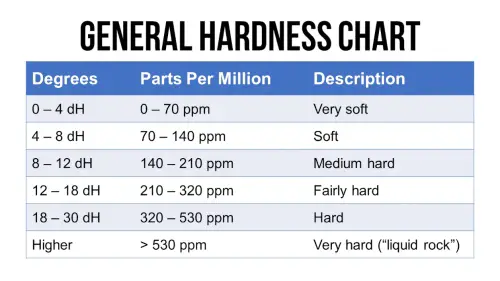
Aquarium KH (Carbonate Hardness)
KH measures the number of carbonates and bicarbonate ions in the water. KH aids in acid neutralization and keeps pH from changing too quickly. Finally, KH represents the buffering capacity (carbonate ions bond with hydrogen ions). Low KH levels indicate that your water has less buffering capacity and that the pH fluctuates easily. High KH levels indicate that your water has more buffering capacity and that the pH level is difficult to change.
Ideal Aquarium KH
KH, like GH, is measured in degrees of KH (dKH) and parts per million (ppm). In general, most freshwater aquariums have a KH of 4 – 8 dKH (70 – 140 ppm). If you need to lower the pH for fish such as Discus or Crystal Shrimp, reduce the KH to 0 – 3 dKH (0 – 50 ppm). African Cichlids, on the other hand, prefer KH levels greater than 10 dKH (180 ppm), which usually coincides with higher pH levels.
How to Measure Aquarium KH
KH levels can be measured using either the API GH and KH Test Kit or the API KH Test Kit. In general, you don’t want the KH levels to fall below 2 dKH because pH swings are more likely to occur (with the exception of raising fish that prefer low pH). Consider measuring KH levels if you want to raise KH levels to avoid pH swings or if you want to reduce KH levels to lower pH levels.
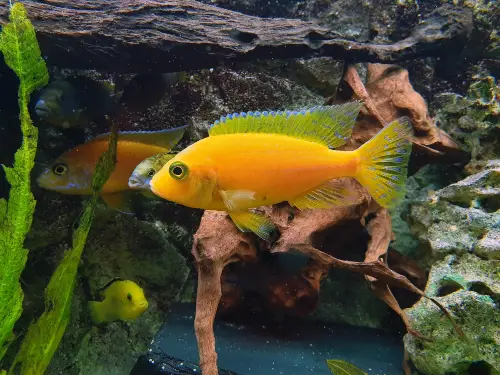
How to Lower Aquarium pH, GH, and KH?
To lower the pH, GH, and KH of your aquarium’s water, simply perform a minor water change to naturally acidify your aquarium over time or lower that pH. Otherwise, use an RO/DI (Reverse Osmosis Deionized Water System) to remove all minerals from the water.
Adding real wood as décor can also help in lowering your PH, GH, and KH levels.
How to Raise Aquarium pH, GH, and KH?
Crushed coral can be used in your substrate or in a filter media bag in your canister or hang-on-back (HOB) filter to raise the pH, GH, and KH of your water. The lower your pH, the quicker it will eat through and dissolve the crushed coral. As a result, it may need to be replaced every 6 to 12 months.
Using Aragonite sand as a substrate is another great way to increase PH. Again, it will also eventually deplete its mineral content and need to be replaced in order to maintain your higher PH levels.
Conclusion
Although pH, GH, and KH measure different types of ions, they are all interconnected and help to balance water chemistry. When natural minerals are added to an aquarium, they release a variety of ions that influence various water parameters.
Fishkeepers often take pH, GH, and KH for granted, so don’t fall into the trap of assuming those water parameters are always fine. Make a habit of testing for them on a regular basis as preventive maintenance.
We hope that this guide has assisted you in maintaining the water chemistry in your tank so that your fish can remain healthy. If you liked this article, you should also check our academy section and other articles.

